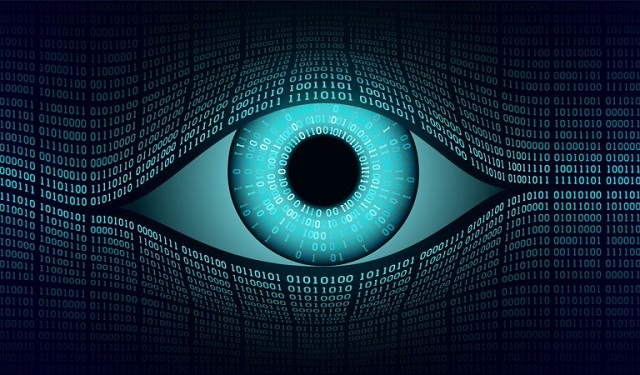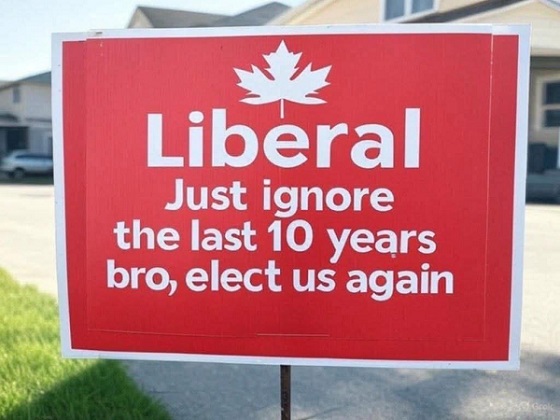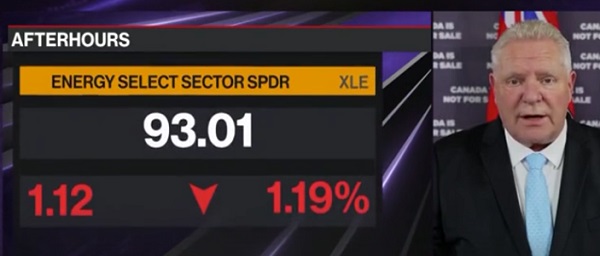Bruce Dowbiggin
iPhone Now Collects Your Mental Health Data

From the Brownstone Institute
By
No data is 100% secure, and this is mental health data. Data that might be extremely embarrassing, career-damaging, or has the potential to disrupt family relationships. Remember, no one knows what new laws, regulations, or more might come to pass years from now.
![]()
True Story: The Health app built into iPhones is now collecting as much personal information on the mental health of each and every one of us as they can get a hold of.
Yet, a search on Google and Brave yielded no results on the dangers of sharing such information over the phone or the internet. Seriously, no single MSM has done an article on why such data sharing might be a bad idea?
To start, in sharing such data, you aren’t just sharing your information; iPhone knows exactly who your family members are. In many cases, those phones are connected via family plans.
iPhone mental health assessments not only ask questions about your mental health but can also infer the mental health status of family members, as demonstrated by the image publicly shared by phone on the benefits of a phone mental health assessment.

What could possibly go wrong?
Although the iPhone has historically been known to keep user data “safe,” this is not a given, and there have been hacks and data breaches over the years.
CrowdStrike happened – from just a simple coding error. In 2015, all of my confidential data given to the DoD and the FBI in order to get a security clearance was harvested by the Chinese government, when they hacked into the government’s “super-secret,” and “super-secure” government data storage site. In response, the government offered me a credit report and monitoring of my credit score for a year. Yeah – thanks.
The bottom line – no data is 100% secure, and this is mental health data. Data that might be extremely embarrassing, career-damaging, or has the potential to disrupt family relationships. Remember, no one knows what new laws, regulations, or more might come to pass years from now. This type of information should not be harvested and stored.
Stay Informed with Brownstone Institute. Sign up for updates.
Furthermore, trusting that Apple will never sell that data or pass it off to research groups is very naive. In fact, mental health data is already being mined.
Apple has partnered with various health organizations and academic institutions to conduct health-related studies, such as Harvard T.H. Chan School of Public Health, Brigham and Women’s Hospital, and the University of Michigan on various health studies. Apple also collaborates with the University of California, Los Angeles (UCLA) on a Digital Mental Health Study. This study likely utilizes data collected through Apple devices to investigate mental health patterns and outcomes. Trusting that the user identifiers have been completely stripped before that data is passed on is a risk that one takes when entering such information into an iPhone.

“Connect with resources.”
So how does Apple benefit? At this time, it appears that Apple is selling advertising of various mental health services by “connecting” services to people’s phones. Apple writes that “These assessments can help users determine their risk level, connect to resources available in their region, and create a PDF to share with their doctor.”
That might mean that if one presses the depressed button in the mental health assessment, Apple will place ads on the search engine for anti-depressants or physicians that prescribe them.
Why would that example be relevant, and which pharmaceutical companies might benefit?
iPhone has developed their mental health assessment with an “educational grant” from Pfizer!

Pfizer manufactures and sells Zoloft, Effexor, Pristiq, and Sinequan formulations. Together the sales revenue for these drugs is in the billions each year:
From 2015 to 2018, 13.2% of American adults reported taking antidepressant medication within the past 30 days, with sertraline (Zoloft) being one of the most common. Even off-patent, there were 39.2 million prescriptions filled with an annual sales revenue of 470 million.
Effexor XR is an antidepressant medication that was originally developed by Wyeth (now part of Pfizer). In 2010, when the first generic version of Effexor XR was introduced in the United States, the brand name product had annual sales of approximately $2.75 billion. By 2013, due to generic competition, Pfizer’s sales of Effexor XR dropped to $440 million.
According to IMS Health data, in 2016, Pristiq (desvenlafaxine) had annual sales of approximately $883 million in the United States, although sales appear to have fluctuated over the years.
The bottom line is that Pfizer is not supplying educational grants to develop mental health assessment software for Apple out of the “goodness of their heart.” Mental health inventions via medication are a big business, and these companies are looking to profit.
This is just one way that Apple is using surveillance capitalism by data mining mental health status and then selling access to that data to Big Pharma, Big Tech, physician and insurance companies, etc.
How this information, which once released or leaked, can never be returned with privacies intact, will be used in the future is unknown.
If the setting for sharing research on health conditions has not been deactivated, this information will go into a database somewhere. It is only Apple’s assurance that your identification has been stripped from the data. Further, your mental health information will be uploaded to the cloud and will be used as a behavioral future. To be shared, packaged, sold, used to influence your decision-making, etc.
I am wary of the highly profitable industry that has been built up around “mental disorders.” Over the years, the American Psychiatric Association and the fields of psychology and psychiatry have hurt individuals and families by both classifying diseases and disorders incorrectly and by developing treatments and therapies that were and are dangerous. Many are still in use. Here are a few examples:
- There are estimates that 50,000 lobotomies were performed in the United States, with most occurring between 1949 and 1952. In 1949, the Nobel Prize in Physiology or Medicine was awarded to António Egas Moniz for his development of the lobotomy procedure.
- Homosexuality was classified as a mental disorder in 1952 with the publication of the first Diagnostic and Statistical Manual of Mental Disorders (DSM-I) by the American Psychiatric Association (APA). It was listed under “sociopathic personality disturbance.” This classification remained in place until 1973.
- Selective Serotonin Reuptake Inhibitors (SSRIs) are a widely prescribed class of antidepressant medications. There is a link between SSRIs and increased risk of violent crime convictions, and other research has shown an increase in self-harm and aggression in children and adolescents taking SSRIs.
- The APA supports access to affirming and supportive treatment for “transgendered” children, including mental health services, puberty suppression and medical transition support.
- The APA believes that gender identity develops in early childhood, and some children may not identify with their assigned sex at birth.
- Asperger’s syndrome was merged into the broader category of autism spectrum disorder (ASD) in the DSM-5 in 2013. Since then, a large number of people have faced discrimination and barriers to entry into higher-paying positions. Children handed such a diagnosis also can suffer a lack of confidence in their ability to manage relationships effectively, which can easily carry on to adulthood.
These are just a few of the many, many ways the American Psychiatric Association and the fields of psychology and psychiatry have gotten things very wrong.
- A survey of more than 500 social and personality psychologists published in 2012 found that only 6 percent identified as conservative overall, implying that 94% were liberal or moderate.
- At a 2011 Society for Personality and Social Psychology annual meeting, when attendees were asked to identify their political views, only three hands out of about a thousand went up for “conservative” or on the right.
The liberal bias in psychology influences findings on conservative behaviors.
To bring this back to the use of software applications and the iPhone mental health app in particular, be aware that these software programs are being developed by people with a liberal bias and who will view the beliefs of conservatives negatively. What this means for future use of this data is unknown, but it can’t be good.
If you do choose to use the mental health applications, which mainstream media has nothing but praise for, be aware – there are alligators in those waters.
But sure that the data sharing mode, particularly giving data access to researchers is turned off. But even then, don’t be surprised if your phone begins planting messages about the benefits, SSRIs, or other anti-depressant drugs into your everyday searches. Or maybe your alcohol use or tobacco use data will be used to supply you with advertisements on the latest ways to reduce intake or how to find a good mental health facility. These messages may very well include neuro-linguistic programming methods and nudging, to push you into treatment modalities. But honestly, it is all for your “own good and for the benefit of your family.”

Now, the iPhone and the watch can be valuable tools. The EKG, blood oxygen, and heart rate monitoring are fantastic tools for those who suffer from cardiac disorders. I have found them to be extremely helpful.
My wife, Jill is often motivated by getting more walking steps each week via her iWatch tracker.
Just be aware that these programs can be invasive. Data is never 100% secure and it is being used. We just don’t know all the details.
Republished from the author’s Substack
2025 Federal Election
Will Four More Years Of Liberals Prove The West’s Tipping Point?

The 1997 political comedy Wag The Dog featured a ruling president far behind in the polls engaging Hollywood to rescue his failing ratings. By inventing a fake war against Albania and a left-behind “hero”— nicknamed Shoe— the Hollywood producer creates a narrative that sweeps the nation.
The meme of hanging old shoes from the branches of trees and power lines catches on and re-elects the president. In a plot kicker, the vain producer is killed by the president’s handlers when he refuses to stay quiet about his handiwork. The movie’s cynicism over political spin made it a big hit in the Bill Clinton/ Monica Lewinsky days.

In the recent 2024 election the Democrats thought they’d resurrect the WTD formula to spin off senile Joe Biden at the last minute in favour of Kamala Harris. Americans saw through the obvious charade and installed Donald Trump instead.
You’d think that would be enough to dissuade Canadians who pride themselves on their hip, postmodern humour. But you’d be wrong, they don’t get the joke. Wag The Carney is the current political theatre as Liberals bury the reviled Justin Trudeau and pivot to Mark Carney. If you believe the polling it might just be working on a public besotted by ex-pat Mike Myers and “Canada’s Not For Sale”.
As opposed to Wag The Dog, few are laughing about this performative theatre, however. There are still two debates (English/ French) and over three more weeks of campaign where anything— hello Paul Chiang—can happen. But with Laurentian media bribed by the Libs— Carney is threatening those who stray— people are already projecting what another four years of Liberals in office will mean.
As the most prominent outlier to Team Canada’s “we will fight them on the beaches…” Alberta’s premier Danielle Smith is already steering a course for her province that doesn’t include going to war with America on energy. She asked Trump to delay his tariffs until Canadians had a chance to speak on the subject in an election April 28. Naturally the howler monkeys of the Left accused her of treason. She got her wish Wednesday when Canada was spared any new tariffs for the time being.

Clearly, she (and Saskatchewan premier Scott Moe) have no illusions about Carney not using their energy industry as a whipping post for his EU climate schemes. They’ve seen the cynical flip in polls as former Trudeau loyalists hurry back to the same Liberal party they abandoned in 2024. They know Carney can manipulate the Boomer demographic just as he did when he called for draconian financial methods against the peaceful Truckers Convoy in 2022.
Former Reform leader Preston Manning is unequivocal: “’Large numbers of Westerners simply will not stand for another four years of Liberal government, no matter who leads it.’“ So how does the West respond within Confederation to protect itself from a predatory Ottawa elite?
Clearly, the emissions cap— part of Carney’s radical environmental plans— will keep Alberta’s treasure in the ground. With Carney repeating no cancellation of Bill C-69 that precludes building pipelines in the future, the momentum for a referendum in Alberta will only grow. The NDP will howl, but there will be enough push among from the rest of Albertans for a new approach within Canada.
In this vein Smith even wants to approach Quebec. While it seems like odd bedfellows the two provinces most at odds with the status quo have much in common . “This is an area where our two provinces may be able to coordinate an approach,” Smith wrote this week. That could include referendums by the middle of 2026.
Perhaps the best recipe for keeping the increasingly fractious union together is a devolution of power, not unlike that governing the United Kingdom. While Westminster remains the central power since 1997, there are now separate parliaments in Scotland, Wales and Northern Ireland that put power closer to the citizen, so that local factors are better recognized in decision making.
With so little uniting the regions of the country any longer, devolution might provide a solution. What form could decentralization take within Canada? A Western Canada Parliament could blunt predatory federal energy policies while countering the imbalances of Canada’s equalization process. Similar parliaments representing Quebec, the Atlantic provinces, Ontario and B.C. would protect their own special interests within Canada. Ottawa could handle Canada’s international obligations to defence, trade and international cooperation.
While the idea is fraught with pitfalls it nonetheless remains preferable to a breakup of the nation, which four more years of Liberals rule under Mark Carney and the same Trudeau characters will likely precipitate. Smith’s outreach case would be the beginning of such a process.
None of this would be necessary were the populations of Eastern Canada and B.C.’s lower mainland remotely serious after snoozing through the Trudeau decade. The OECD shows Canada’s 1.4% GDP barely ahead of Luxembourg and behind the rest of the industrialized world from 2015-2025. As we’ve said before the Boomers sitting on their $1 million-plus homes are re-staging Woodstock on the Canada Pension and OAS. As with Wag The Dog, they’re not getting the joke.

When the Boomers award themselves another four years of taxapalooza and Mike Myers and the other “Canada Not For For Sale” celebs head south to their tax-avoidance schemes how will the Boomers say they’ve left Canada better off for anyone under 60? We’ll hang up and listen to your answer on the TV.
Bruce Dowbiggin @dowbboy is the editor of Not The Public Broadcaster A two-time winner of the Gemini Award as Canada’s top television sports broadcaster, his new book Deal With It: The Trades That Stunned The NHL And Changed hockey is now available on Amazon. Inexact Science: The Six Most Compelling Draft Years In NHL History, his previous book with his son Evan, was voted the seventh-best professional hockey book of all time by bookauthority.org . His 2004 book Money Players was voted sixth best on the same list, and is available via brucedowbigginbooks.ca.
Bruce Dowbiggin
Are the Jays Signing Or Declining? Only Vladdy & Bo Know For Sure

We were watching the Los Angeles Dodgers home opener on Thursday. The defending World Series champs came from behind to beat Detroit 5-4. The big hit was a three-run homer from a player named Teoscar Hernandez off AL Cy Young winner Tarik Skubal

If that name sounds familiar, Teoscar was a Toronto Blue Jay from 2018-2022. He pounded 121 homers in the span as part of the Jays’ order. But when Toronto decided it needed bullpen help he was traded to Seattle in 2022 for pitchers Erik Swanson and Adam Macko. While Swanson has battled injuries and Macko is no-go, Hernandez keeps pounding the ball.
In his one year in Seattle he had strikeout problems but did hit 26 homers with 93 RBIs. In the winter of 2023-24 he signed as a free agent with the aforementioned Dodgers. Batting behind Shohei Ohtani he launched 33 homers and 99 RBIs. He won the All Star Home Run Derby. His key hit in Game 5 of the World Series propelled L.A. to the title. The stacked Dodgers liked him enough to give him a three-year, $66 million contract.
Why are we telling you this? Because the Blue Jays also started their 2025 season at home, matched against the Baltimore Orioles. And while there are reasons to believe the Jays will not replicate their 74-win disaster of 2024, there remain the old bugaboos of injuries and pitching. In the four games against the division rivals they need to beat, Jays’ pitching gave up 24 runs while scoring 18—nine of them in one game.
The splashy acquisition of 40 year old HOF pitcher Max Scherzer has already gone sideways as a bad thumb has put him on the IL. The new stopper, Jeff Hoffman, was rejected on medical grounds by two other teams before Toronto’s money made him healthy. The rest of the bullpen— a disaster in 2024— got off to a rocky start with Orioles hitters playing BP against them. They’ve already DFA’d one pitcher and called up two more from the minors. The re-made pen performed well in Game 4, but how it holds up in their next 158 games is a mystery.
On offence, while their rivals in Boston and New York added sexy pieces to their rosters the Jays were only able to acquire veteran switch-hitting Baltimore slugger Anthony Santander. More typical of their other signees is ex-Cleveland 2B infielder Andres Giminez who in 2023 had the lowest average exit velocity of all AL batters (84.8 mph), and led the AL in percentage of balls that were softly hit (21.7%). He does play a slick second base.
The winter story line for the Jays offence was what to do about Vladimir Guerrero Jr. and Bo Bichette, the erstwhile star-dust twins who were— along with Cavan Biggio— supposed to guarantee titles when they emerged in 2019. Biggio is gone, so the other two carry the credibility of the management team of Mark Shapiro and Ross Atkins. From the outside the Jays seem paralyzed to act.

While the Jays dithered, the price for players like Guerrero and Bichette soared. Using Juan Soto’s Mets $765 M deal as a yardstick Guerrero turned down a Jays offer of just under $600 M, saying he was done talking during the season. If Shapiro/ Atkins had anticipated the market Guerrero would have cost a lot less in 2023-24. If there is no progress by the trading deadline the Jays will be forced to get what they can in a trade.
Shortstop Bichette— a gifted player who battled injuries in 2024—is likewise up for a new deal. He has started strong in 2025 and would command a handsome return in a trade. He says the Jays are waiting to see what happens with Guerrero first. Having sold the pair for years to their loyal fans, having to trade them will be a massive PR blow. And while Jays’ national audience can be an advantage, having a whole country pissed with you is devastating.
The rest of the secret sauce for a Toronto comeback revolves around one of their hitting prospects taking a step forward. Any/ all of Will Wagner, Alan Roden, Addison Barger or Leo Jimenez can have a job if they show their bats are for real. Otherwise Shapiro and Atkins will hope that Dalton Varsho, George Springer and Alejandro Kirk can find a little magic in their aging bats.
A failure to retain talent may prompt fans to recall that Rogers decided that Shapiro and Atkins, who dumped Teoscar, were worthy replacements for the previous GM who’d walked away. The man Schneider and Atkins were hired to improve upon— Canadian Alex Anthopoulos— has made the Atlanta Braves a dominant team. Since AA moved to Atlanta they’ve won 90, 97, 38 (Covid year), 88, 101, 104, 109, 89 games. They’ve won a World Series and two other playoff series. They won six straight NL East titles before injuries sank them last year.
The Braves have developed young everyday superstars like Ronald Acuńa Jr. who don’t get picked off second base. They have built a pitching staff largely from within, not splashy FA signings. They have swagger without cockiness. They are set for years to come.
The Blue Jays? Since AA left they’ve won 73, 67, 32 (Covid), 91, 92, 89, 74 games. They’ve won zero postseason games while missing the playoffs in four seasons. The players they traded are starring for other teams in the postseason. They are again employing an inexperienced company guy as manager.
While it’s true that the sun can’t shine on the same team every day, Jays fans believe it would be nice if the great orb would find their club as it did back in the 1992/93 World Series days. Instead of the reflected glory of past stars winning for other teams. Patience is thin. And time is ticking.
Bruce Dowbiggin @dowbboy is the editor of Not The Public Broadcaster A two-time winner of the Gemini Award as Canada’s top television sports broadcaster, his new book Deal With It: The Trades That Stunned The NHL And Changed hockey is now available on Amazon. Inexact Science: The Six Most Compelling Draft Years In NHL History, his previous book with his son Evan, was voted the seventh-best professional hockey book of all time by bookauthority.org . His 2004 book Money Players was voted sixth best on the same list, and is available via brucedowbigginbooks.ca.
-

 2025 Federal Election2 days ago
2025 Federal Election2 days agoMORE OF THE SAME: Mark Carney Admits He Will Not Repeal the Liberal’s Bill C-69 – The ‘No Pipelines’ Bill
-

 2025 Federal Election2 days ago
2025 Federal Election2 days ago‘Coordinated and Alarming’: Allegations of Chinese Voter Suppression in 2021 Race That Flipped Toronto Riding to Liberals and Paul Chiang
-

 2025 Federal Election1 day ago
2025 Federal Election1 day ago‘I’m Cautiously Optimistic’: Doug Ford Strongly Recommends Canada ‘Not To Retaliate’ Against Trump’s Tariffs
-

 Business1 day ago
Business1 day agoCalifornia planning to double film tax credits amid industry decline
-

 Alberta2 days ago
Alberta2 days agoEnergy sector will fuel Alberta economy and Canada’s exports for many years to come
-

 Business1 day ago
Business1 day agoCanada may escape the worst as Trump declares America’s economic independence with Liberation Day tariffs
-

 Alberta1 day ago
Alberta1 day agoBig win for Alberta and Canada: Statement from Premier Smith
-

 2025 Federal Election2 days ago
2025 Federal Election2 days agoDon’t let the Liberals fool you on electric cars






